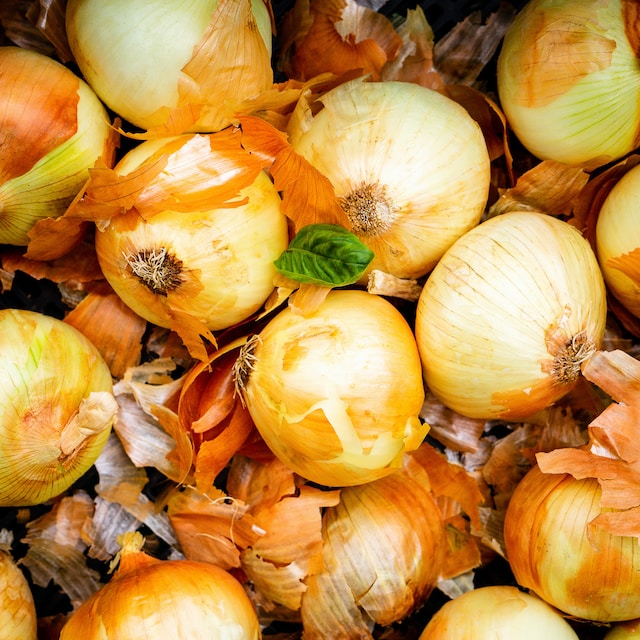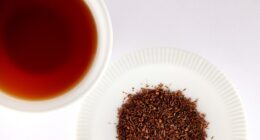Yellow onions are known for their pungent taste and robust flavor. They are versatile and work well in a wide range of dishes, from soups to stir-fries. White onions have a milder flavor with a slightly sweet undertone. They are often preferred raw in salads or used as a base for salsas.
What are yellow onions?

Yellow onions, with their golden brown skin and robust flavor, are one of the most commonly used varieties in cooking. These onions have a pungent and slightly sweet taste when raw, but become mellow and savory when cooked. They have a high sulfur content, which is what gives them their distinct aroma and tangy bite.
When it comes to texture, yellow onions have thick layers that hold up well during cooking. This makes them perfect for caramelizing or sautéing as they soften beautifully without turning mushy. Their versatility shines through in various dishes – from soups and stews to stir-fries and roasts.
What are white onions?

White onions, as the name suggests, have a crisp white flesh and papery white skin. They belong to the Allium family, which also includes garlic, shallots, and scallions. These onions have a milder flavor compared to yellow onions but still pack a punch when it comes to adding depth and aroma to dishes.
One of the key characteristics of white onions is their mildness. The pungent taste that you get from biting into a yellow onion is significantly reduced in white varieties. This makes them an excellent choice for raw preparations like salads or salsas where you want a mellow onion flavor without overpowering other ingredients.
Due to their high water content and lower sulfur compounds compared to yellow onions, white onions have less tear-inducing effects when chopping them – making them more bearable for those with sensitive eyes!
In terms of texture, white onions are firm and crisp when raw but become soft and translucent when cooked. They lend themselves well to caramelization due to their natural sugar content.
Yellow onions Vs. White onions – Key differences
| Attribute | Yellow Onions | White Onions |
|---|---|---|
| Appearance | Golden-brown outer skin, yellow flesh | White or off-white outer skin, white flesh |
| Flavor | Strong, pungent, and slightly sweet | Mild, slightly sweeter, and less pungent |
| Cooking Characteristics | Holds shape well when cooked, becomes mellow and sweet | Softens more quickly when cooked, provides subtle flavor |
| Common Uses | Versatile; suitable for both raw and cooked dishes | Ideal for raw consumption in salads and sandwiches |
| Culinary Applications | Soups, stews, braised dishes, caramelized onions | Raw in salads, salsas, garnishes, sandwiches |
| Availability | Widely available and commonly used | Less common, often used in specific culinary applications |
| Storage | Can be stored for several months in a cool, dry place | Relatively shorter shelf life; should be used within a few weeks |
| Nutritional Profile | Similar nutritional content to white onions | Similar nutritional content to yellow onions |
How to choose the right onion for your dish
Choosing the right onion for your dish can enhance its flavor and texture. Here are some general guidelines to help you choose the appropriate onion for your cooking needs:
Yellow Onions: Yellow onions are versatile and widely available, making them a popular choice for a variety of dishes. They have a strong flavor that becomes mellow and sweet when cooked. They are well-suited for savory dishes, including soups, stews, braised dishes, and caramelized onions. If a recipe simply calls for “onions” without specifying a type, yellow onions are usually a safe choice.
White Onions: White onions have a milder flavor compared to yellow onions and are slightly sweeter. They are often used raw in dishes where you want a more subtle onion flavor, such as salads, salsas, sandwiches, and other uncooked preparations. They have a crisp texture and can provide a refreshing bite to dishes.
Red Onions: Red onions have a vibrant purplish-red outer skin and a mild to moderate flavor. They are commonly used raw in salads, sandwiches, and relishes. Red onions are known for their crisp texture and appealing color. They can also be used in cooked dishes where you want to add a pop of color.
Sweet Onions: Sweet onions, such as Vidalia onions, Walla Walla onions, or Maui onions, have a high sugar content and mild flavor. They are ideal for eating raw in salads or on sandwiches, and their sweetness makes them great for caramelizing as well. Sweet onions are less pungent and can be a good option if you prefer a milder onion flavor.
Shallots: Shallots have a milder and sweeter flavor compared to onions. They have a unique, delicate taste and are commonly used in French cuisine. Shallots work well in sauces, dressings, and dishes where you want a subtle onion flavor without overpowering other ingredients.
The choice of onion depends on personal preference and the desired flavor profile of your dish. Consider the cooking method, intensity of flavor desired, and whether the onion will be cooked or eaten raw. Experimenting with different onion varieties can add depth and complexity to your cooking.
Recipes that feature yellow onions
- French Onion Soup
- Beef Stir-Fry with Yellow Onions
- Caramelized Onion Tart
- Onion Rings
- Chicken and Onion Skillet
- Onion and Mushroom Quiche
- Sausage and Onion Pizza
- Onion Chutney
- Onion Jam
- Onion Bhaji (Onion Fritters)
Recipes that feature white onions
- Pico de Gallo
- White Onion and Garlic Soup
- White Onion and Mushroom Risotto
- White Onion Dip
- White Onion and Goat Cheese Tart
- Grilled Chicken with White Onion Salsa
- White Onion and Spinach Quiche
- White Onion and Tomato Salad
- White Onion Frittata
- White Onion and Cabbage Slaw
Types of Onions
When it comes to onions, there is a wide variety to choose from. Each type has its own unique flavor and characteristics that can enhance any dish. Let’s take a look at some of the most popular types of onions:
Yellow Onions: These are the most common type of onion found in grocery stores. They have a strong, pungent flavor that becomes milder when cooked. Yellow onions are versatile and can be used in a variety of dishes such as soups, stews, and stir-fries.
White Onions: Known for their sharp and tangy taste, white onions are often used raw in salads or salsas. They have a slightly sweeter flavor compared to yellow onions but can still hold up well when cooked.
Red Onions: With their vibrant purple skin and mild flavor, red onions add color and crunch to any dish they’re included in. They are commonly used raw in sandwiches, salads, or pickled for toppings.
Sweet Onions: As the name suggests, sweet onions have a mild and sweet taste with less sulfur content than other varieties. Vidalia onions from Georgia or Walla Walla sweet onions from Washington state fall into this category.
Spring/Scallions:These young immature bulbs usually do not form fully developed bulbs like those we see with other onion varieties which means they remain small while having tender green leaves among them which makes them perfect for salad dressings or as garnish on various foods like soups,
Shallots : These smaller-sized members of the onion family offer subtle flavors that blend well with sauces or dressings without overpowering other ingredients
Cipollini :Cipollini translates to “little onion” in Italian – these flat-shaped pearl-like beauties caramelize easily due to their higher sugar content making them ideal for roasting alongside meats
Image Credits
Featured Image By – Thomas M. Evans on Unsplash
Image 1 By – James Lee on Unsplash
Image 2 By – Thomas Martinsen on Unsplash









